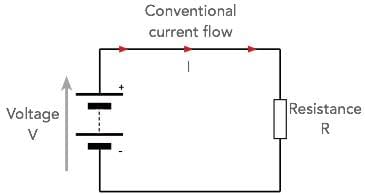 circuit elements:The most commonly encountered linear one-ports are the inductor of inductance
circuit elements:The most commonly encountered linear one-ports are the inductor of inductance
series circuit: A series circuit is one that has more than one resistor, but only one path through which the electricity (electrons) flows. From one end of the cell (battery), the electrons move along one path with NO branches, through the resistors, to the other end of the cell. All the components in a series circuit are connected end-to-end.
A resistor in a circuit is anything that uses some of the power from the cell. In the example below, the resistors are the bulbs. In a series circuit, the components are arranged in a line, one after the other.
Take a look at the diagram below:
The schematic drawing is a better way to draw a series circuit.

Parallel circuits: In a parallel circuit, there is more than one resistor (bulb) and they are arranged on many paths. This means electricity (electrons) can travel from one end of the cell through many branches to the other end of the cell.
Look at the illustration below involving two resistors in a parallel circuit:


